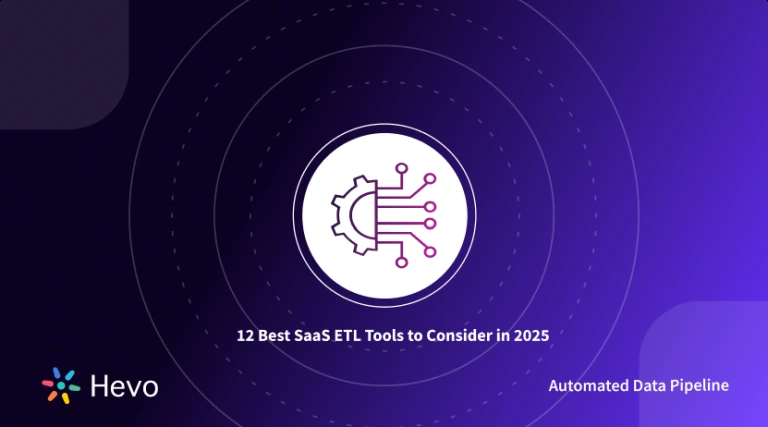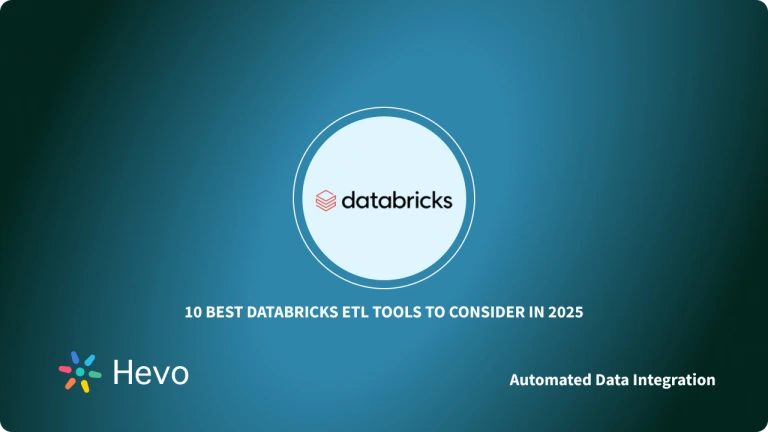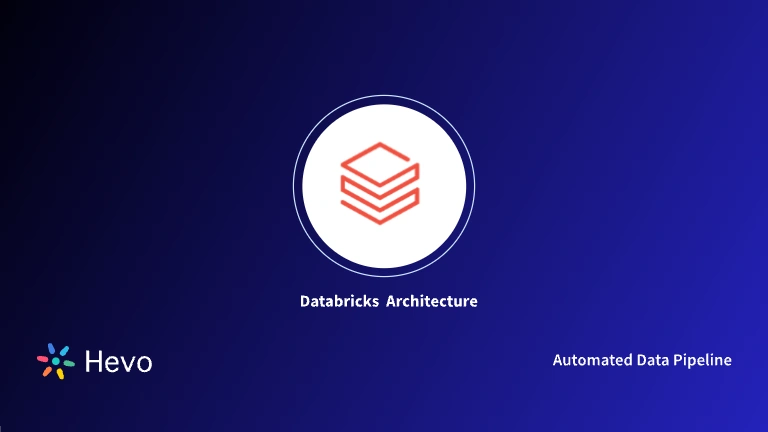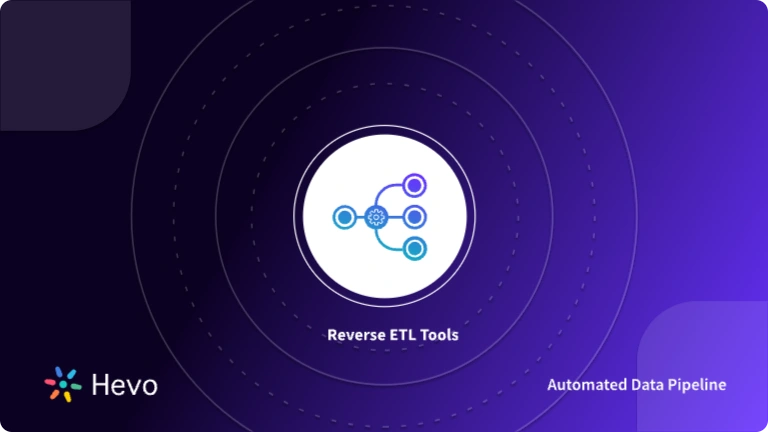 KEY TAKEAWAY
KEY TAKEAWAYManaging Databricks data becomes effortless when powered by the right ETL tools. Here are the top 5 ETL Tools for Databricks:
- Hevo Data: A fully no-code ETL tool with 150+ integrations that automates schema handling, real-time ingestion, and recovery, ensuring always-ready data in your Databricks Lakehouse.
- Fivetran: Offers 700+ connectors with automated schema adaptation, delete capture, and priority-first syncs, ideal for hands-free Databricks data management.
- AWS Glue: A serverless ETL service with centralized metadata management via Glue Data Catalog and tight S3 and Delta Lake integration for scalable Databricks workflows.
- Azure Data Factory: Simplifies hybrid and cloud data orchestration with low-code workflows, enabling seamless Databricks integration for analytics and machine learning.
- Airbyte: Open-source and highly extensible with 400+ connectors and dbt integration, letting teams build and manage Databricks pipelines with full flexibility.
Managing Databricks data without the right ETL tools can quickly become chaotic. You end up manually exporting datasets, patching them together, and wondering why reports never match. This slows decisions and leaves teams doubting their own numbers.
The solution is using ETL tools built for Databricks. They automatically collect your scattered data, clean and transform it, and load it into Databricks or other destinations in a consistent, reliable way. That means no more chasing mismatched reports or second-guessing results.
Databricks runs on Apache Spark for fast computation, Delta Lake for reliable storage, and Unity Catalog for governance. Add Delta Live Tables, Auto Loader, and Workflows, and you get pipelines that are scalable and efficient.
Table of Contents
What are Databricks ETL Tools?
ETL (Extract, Transform, Load) is the process of pulling data from multiple sources, reshaping it into a usable format, and storing it in a warehouse or lakehouse for analytics.
In Databricks, ETL does not run outside on separate servers. It runs natively within the lakehouse, so extraction, transformation, and loading all happen right where the data lives.
Databricks provides several built-in components that power ETL:
- Delta Lake: The storage layer that brings reliability and performance to data lakes with ACID transactions, schema enforcement, and data versioning.
- Auto Loader: Ingests streaming and batch data from cloud storage, automatically detecting new files and handling schema evolution. Commonly used for the “bronze” raw data layer in medallion architecture.
- Databricks Lakeflow: A unified suite for declarative pipeline building, orchestration, and automation. It replaces Delta Live Tables (DLT) and Workflows as separate products, combining them into one end-to-end experience.
- Medallion Architecture: A recommended design pattern that organizes data into Bronze (raw), Silver (cleaned), and Gold (aggregated) layers for structured ETL flows.
That’s not all, Databricks also gives flexibility for ETL by supporting programming languages and processing, namely:
- SQL for transformations, queries, and data management.
- Python (PySpark) for advanced, custom ETL logic.
- Apache Spark is the distributed compute engine at the core of Databricks, enabling high-speed processing of massive datasets.
These components are the core of Databricks ETL, handling ingestion, transformation, and orchestration inside the Lakehouse. They let teams build pipelines that are fast, reliable, and easy to scale without extra tools.
Third-party ETL tools add to this by giving visual pipeline builders more connectors and built-in quality checks. Databricks works smoothly with them, which helps when you need to bring in data from SaaS apps or other external sources.
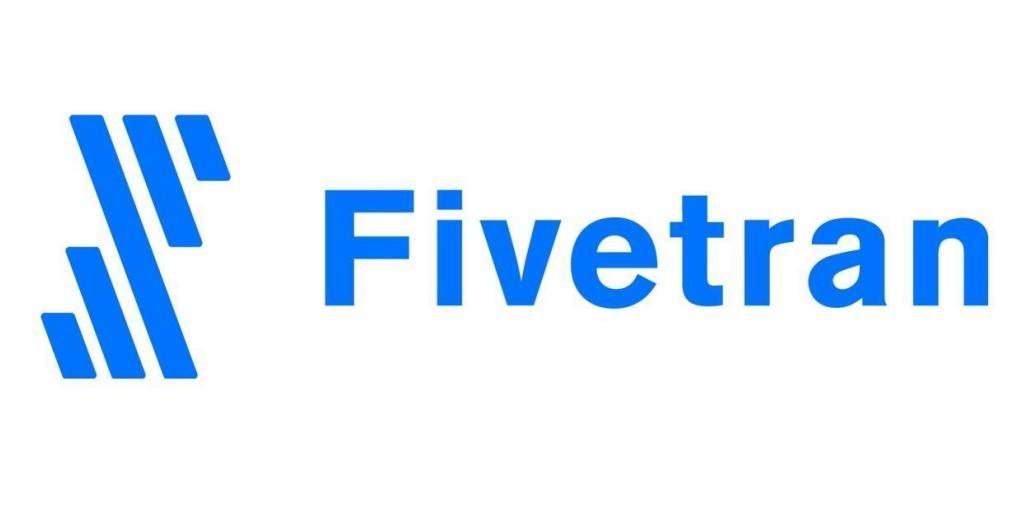 | ||||||||||
| Free Plan |  |  |  Open source |  |  |  | ||||
| Best for | Fully automated, no-code pipelines optimized for Databricks Lakehouse | Instant schema adaptation, historical data capture | Best for SQL-based analytics alongside Databricks | Orchestrates data flows into Databricks and hybrid sources | Open-source, highly customizable for Databricks | Embedded data quality checks for Databricks ETL | Low/no-code transformations tailored for Databricks Delta Lake | Simplifies first-party data ingestion for Databricks analytics | Automates marketing data for Databricks reporting | Customer data unification directly into Databricks Lakehouse |
| Pricing (Free/Not Free) |  Core / Enterprise |  Core / Advanced | ||||||||
| Connectors | 150+ | 700+ | AWS-native connectors | 90+ | 400+ | 900+ | 50+ | 100+ | 500+ | 300+ |
| Security | Enterprise-grade | Data masking & hashing | AWS security standards | Azure compliance | Standard | SOC2, HIPAA, ISO | Standard cloud security | Standard | Standard | Standard |
| Scalability |  |  |  |  |  |  |  |  |  |
Top 11 Best Databricks ETL Tools in 2025
1. Hevo Data
Hevo makes powering your Databricks Lakehouse effortless with a fully no-code, end-to-end platform. You can connect multiple sources and start streaming data immediately without writing scripts. Hevo handles schema changes, incremental updates, and real-time ingestion, ensuring that your Databricks data is always clean, accurate, and analysis-ready.
What sets Hevo apart is its transformation-first approach. You can clean, standardize, and enrich data as it flows in, so analytics teams get consistent, high-quality information right away. With ready-made pipelines and fully automated workflows, Hevo removes manual maintenance while enabling fast, reliable SQL queries on your Databricks Lakehouse.
Hevo supports Databricks across AWS, Azure, and GCP, letting teams configure destinations on the fly or via Partner Connect. Data is staged in Hevo’s S3 bucket before being batched into Databricks, and features like monitoring, error handling, and security compliance ensure pipelines run smoothly.
Modern data teams trust Hevo for fully automated, lightning-fast analytics with up to 12x better price-performance than traditional warehouses.
Key Features
- Data Deduplication: Ensure unique records are loaded into Databricks tables.
- Include New Tables Automatically: Capture newly created or re-created tables in the source without modifying the pipeline.
- Smart Assist: Receive alerts and insights on pipeline health through email or tools like PagerDuty and Opsgenie.
- Multi-Workspace and Multi-Region Support: Manage teams and pipelines across regions, keeping Databricks integrations smooth.
- Observability Dashboards: Track pipeline performance, latency, event counts, and failures for every object loaded into Databricks.
- Recoverability: Automatically retry failed ingestion at both source and destination to prevent data loss.
Pros
- Simple interface with no-code pipelines.
- Strong observability and monitoring.
- Multi-region and multi-workspace flexibility.
- Reliable recovery when sources fail.
Cons
- Complex transformations may need technical knowledge.
- Entry-level plans have workspace and region limits.
Pricing
- Free – $0 forever: 1M events/month, limited connectors, 5 users, 1-hour scheduling.
- Starter – $239/month: 5M–50M events, 150+ connectors, dbt, 24×5 support.
- Professional – $679/month: Larger event volumes, advanced controls, priority support.
- Business – Custom: Enterprise-grade with SSO, VPC peering, and RBAC.
2. Fivetran
Fivetran streamlines feeding data into your Databricks Lakehouse over 700 ready-to-use connectors. Teams can pull data from almost any source directly into the lakehouse without writing complex scripts. It automatically adapts to schema changes, captures deletes, and syncs custom tables, so the data is always complete, accurate, and ready for analysis.
Once the data lands in Databricks, Fivetran works seamlessly with Delta Lake, Spark, and Lakeflow. Data moves into the bronze layer and flows incrementally into Silver and Gold layers, keeping pipelines organized and efficient.
Priority-first loading ensures the most recent data is available immediately, while column hashing and data blocking protect sensitive information without slowing anything down.
Key Features
- Capture Deletes: Detects or infers deletions to keep destination data accurate.
- History Mode: Tracks table changes over time for trend analysis.
- Data Blocking: Skip specific tables or columns for privacy and efficiency.
- Column Hashing: Anonymizes PII while preserving analytical value.
- Priority-First Sync: Loads the most recent data first for immediate use.
- API Configurable: Manage users, groups, and connections programmatically.
Pros
- Fully automated pipelines with minimal setup.
- Handles deletes and historical data seamlessly.
- Protects sensitive information through blocking and hashing.
- Keeps tables in sync with flexible re-sync options.
- Fast priority-first loading for fresh data.
Cons
- Some connectors don’t capture deletes automatically, risking brief inconsistencies.
- Large dataset re-syncs can take hours or days.
- Advanced features need technical know-how.
- Costs rise quickly with higher data volume and frequency.
3. AWS Glue
AWS Glue ranks in our top 3 for Databricks integration due to its robust metadata management and serverless ETL capabilities. By using the Glue Data Catalog as an external Hive metastore, Databricks clusters gain centralized schema definitions and consistent metadata across multiple workspaces.
Its tight integration with S3 and Delta Lake enables high-performance data transformations and storage directly accessible by Databricks. This setup supports real-time ingestion, scalable processing, and reduces complexity in cross-platform data pipelines.
Glue offers seamless migration of existing PySpark or Scala jobs into Databricks notebooks. Combining Glue’s managed ETL with Databricks’ advanced analytics, ML, and Delta Lake optimizations creates a unified, flexible environment for next-level data engineering and analysis.
Key Features
- Glue Data Catalog as Databricks Metastore: Centralizes metadata and schemas across multiple Databricks workspaces for consistency and governance.
- Job Migration to Databricks: Existing PySpark or Scala Glue jobs can be migrated into Databricks notebooks for optimized Spark performance.
- Serverless ETL: Automatically compute provisions for ETL jobs, reducing infrastructure management and operational overhead.
- Integrated Security with IAM Credential Passthrough: Ensures secure metadata access and compliance across both Glue and Databricks environments.
Pros
- Reduces manual ETL effort with serverless automation.
- Simplifies cross-platform collaboration between AWS services and Databricks.
- Supports scalable pipelines without managing infrastructure.
Cons
- Advanced analytics still require Databricks expertise.
- Complex jobs may need rework when migrating from Glue to Databricks.
- Orchestration split can complicate scheduling for large workflows.
4. Azure Data Factory
Azure Data Factory (ADF) is a cloud-based service that makes moving and transforming data simple. It excels at automating workflows, orchestrating pipelines, and integrating data from multiple sources, so teams can focus on building insights rather than managing infrastructure.
When combined with Databricks, ADF handles the heavy lifting of data ingestion, batch processing, and workflow automation, leaving Databricks free to run advanced analytics, machine learning, and real-time transformations. This partnership ensures that data pipelines are reliable, scalable, and efficient.
ADF also offers a visual, low-code interface, making it easy to design and monitor complex pipelines. Its seamless integration with various cloud and on-premises sources allows teams to build end-to-end solutions quickly, while ensuring data remains accurate, consistent, and ready for analysis.
Key Features
- Data Integration & Orchestration: Connects to a wide range of data sources, moves and transforms data, and publishes results to target stores.
- Code-Free Transformation with Data Flows: Graphical interface for building ETL/ELT pipelines, allowing transformations, aggregations, and joins without writing code.
- SSIS Rehosting: Lift and shift on-premises SQL Server Integration Services (SSIS) workloads to Azure Data Factory with full compatibility and managed runtime.
Pros
- Supports hybrid and cloud-only environments.
- Integrates smoothly with other Azure services.
- Over 90 connectors simplify data ingestion from multiple sources.
Learn More about Azure Data Factory vs Databricks.
Cons
- Learning curve for complex transformations despite the visual interface.
- Performance depends on pipeline design and integration runtime configuration.
- Mostly optimized for the Azure ecosystem, so its cross-cloud integrations may be limited.
5. Airbyte
Airbyte is an open-source data integration platform designed to unify pipelines under a single, fully managed system. With 400+ pre-built connectors and counting, it covers almost every source you might need. When paired with Databricks, Airbyte ensures clean, structured, and timely data is delivered, freeing Databricks to focus on analytics, machine learning, and real-time transformations.
Airbyte stands out for its extensibility and flexibility. Teams can customize existing connectors or build new ones in under 30 minutes using Airbyte’s Connector Development Kit (CDK). It supports Docker-based connectors in any language, making it ideal for organizations that need rapid, adaptable data integrations.
Key Features
- Flexible Data Formats: Choose normalized tables or serialized JSON streams.
- dbt Integration: Apply transformations directly within Airbyte.
- Docker-Based Connectors: Use any programming language for custom workflows.
- Best-In-Class Support: Average response time under 10 minutes with 96/100 CSAT.
Pros
- Open-source and fully extensible for custom workflows.
- dbt integration allows transformations inside the platform.
- Excellent customer support and community backing.
Cons
- Some connectors require manual configuration or maintenance.
- An open-source nature may need internal expertise for enterprise-scale operations.
- The visual interface is less mature compared to fully commercial ETL platforms.
6. Talend
Talend is a comprehensive data integration and management platform designed to streamline the entire data lifecycle. Its visual, codeless interface allows teams to design and orchestrate pipelines efficiently, while embedded data quality checks ensure clean, reliable data.
When paired with Databricks, Talend automates ingestion, transformation, and workflow management, freeing Databricks to focus on advanced analytics, machine learning, and real-time insights. Additionally, Talend stands out for its scalability and flexibility.
It works across cloud and on-premises environments, supports real-time and big data processing, and leverages the Databricks Delta Engine to dynamically scale data engineering jobs. This ensures pipelines are both cost-effective and performant.
Key Features
- Graphical Design Environment: Build and orchestrate pipelines visually without coding.
- Extensive Connectivity: Connect to over 900 databases, applications, and files.
- Data Quality & Cleansing: Profile, standardize, and deduplicate data for accuracy.
- Data Transformation & Mapping: Aggregate, sort, enrich, and convert data across formats.
- Metadata Management: Shared repositories and governance tools.
Pros
- Enterprise-grade governance and data quality.
- Fast pipeline development with codeless design and Spark integration.
Cons
- Steeper learning curve for beginners.
- Enterprise licensing can be expensive.
- Advanced features require technical expertise.
7. Matillion
Matillion is a cloud-native ETL/ELT platform that simplifies building and managing data pipelines with visual, low-code tools. Its no-code interface, generative AI features like Copilot, and automation capabilities help teams transform and prepare data faster. Integrated with Databricks, Matillion leverages Delta Lake to deliver high-performance, scalable, and analytics-ready datasets.
The platform is optimized for Delta Lake on Databricks, taking advantage of ACID transactions, Delta Live Tables, Unity Catalog, and time travel. Pre-built building blocks and reusable jobs let teams set guardrails for pipelines while ensuring best practices, so even less technical users can create reliable data workflows.
Matillion also promotes collaboration and productivity. With a graphical UI bridging visual business logic and underlying SQL/Spark transformations, teams can share datasets instantly, modernize data pipelines, and deliver insights faster across analytics, reporting, and machine learning projects.
Key Features
- Data Orchestration & Automation: Centralized pipeline management via Matillion Hub.
- Monitoring & Debugging: Track logs and diagnose issues from a single interface.
- Data Documentation: Automatically generate pipeline documentation.
- Security & Compliance: Protect data and meet regulatory standards.
Pros
- Optimized for Databricks Delta Lake for fast, scalable analytics.
- Low-code/no-code interface speeds up pipeline creation.
- Supports both structured and semi-structured data efficiently.
Cons
- Advanced transformations may require some coding knowledge.
- Pricing can be high for large-scale enterprise deployments.
- Training may be needed to fully leverage AI-driven pipeline generation.
8. Stitch
Stitchdata is designed to make Databricks analytics faster and easier by consolidating data from multiple sources into a structured, analysis-ready format. Instead of spending time cleaning and merging datasets, teams can focus directly on insights, machine learning, and advanced reporting.
It provides visibility and control throughout the process. Detailed logs, orchestration tools, and documentation clarify when data updates occur, what has changed, and how datasets are structured. This ensures that Databricks always receives reliable, up-to-date data for analytics.
Stitch also offers destination flexibility. You can send data to warehouses, lakes, or storage platforms, all structured for seamless use in Databricks. This centralization reduces fragmentation and accelerates decision-making across teams.
Key Features
- Real-Time Updates & CDC: Incremental and full-refresh replication ensures fresh data.
- Flexible Destinations: Send data where it’s needed while maintaining compatibility with Databricks.
- Documentation: Full transparency on data structure and flow.
Pros
- Makes data immediately usable in Databricks for analysis.
- Provides full visibility into data movement and structure.
- Reduces manual data prep, letting teams focus on insights.
Cons
- Heavy transformations still need Databricks or other tools.
- It’s mainly cloud-focused so on-premises integration is limited.
- Advanced orchestration or custom pipelines may require technical setup.
9. Funnel.io
Funnel.io specializes in consolidating marketing and advertising data from hundreds of platforms into a clean, structured format. Centralizing data in one place it allows Databricks to focus on analysis, reporting, and deriving actionable insights without teams needing to manually wrangle raw marketing data.
The platform emphasizes automation and trustworthiness. It automatically collects, cleans, and standardizes marketing data while enabling custom metrics and transformations. With this structured, high-quality data, Databricks can power analytics dashboards, machine learning models, and BI reporting faster and more reliably.
Funnel.io also supports flexible export destinations, including cloud storage, data warehouses, spreadsheets, and BI tools. Teams can also export marketing data in formats optimized for Databricks.
Key Features
- Extensive Connectors: Over 500 integrations with marketing and advertising platforms.
- Centralized Data Hub: Maintains a single source of truth for all marketing data.
- Data Explorer: Inspect, explore, and combine datasets for better insights.
- Custom Metrics & Transformations: Tailor calculations and fields for specific business needs.
- White-Label Reporting: Brand reports for client or internal presentation.
Pros
- Rapidly consolidates marketing data for Databricks analytics.
- Supports custom metrics and transformations tailored to business needs.
- Flexible export options make integration with Databricks and other platforms simple.
Cons
- Primarily focused on marketing and advertising data.
- Not designed for general-purpose ETL workflows.
- Full utilization of AI and custom metrics may require a learning curve.
10. Segment
Segment is a customer data platform (CDP) that collects and unifies first-party data from websites, apps, and servers to create a complete 360-degree view of each customer. When integrated with Databricks,it allows organizations to activate and analyze this data directly in the lakehouse, powering personalized campaigns, predictive analytics, and AI-driven insights.
The platform emphasizes precision and flexibility. With AI-powered audience creation, identity resolution, and integration across marketing and analytics tools, Segment ensures Databricks receives structured, high-quality customer data ready for advanced modeling, personalization, and real-time analytics.
Segment also supports bidirectional data sharing via Delta Sharing, enabling customers to move event data to and from Databricks. This seamless connection helps teams leverage their lakehouse for machine learning, AI, and operational analytics while keeping customer data governed and actionable.
Key Features
- Data Collection & Unification: Consolidates first-party data from multiple sources into a single customer profile.
- Audience Creation: Build centralized, segmented audiences based on real-time behavior and traits.
- Personalized Experiences: Enables targeted marketing and engagement using Databricks insights.
- AI-Powered Features: Predictive modeling and generative AI for audience optimization.
- Identity Resolution: Merges multiple identifiers to create accurate, unified customer profiles.
Pros
- Converts first-party data into actionable insights for Databricks.
- Supports AI and predictive analytics to enhance personalization.
- Reduces manual data preparation, letting teams focus on campaigns and modeling.
Cons
- Focused on customer data — not a general-purpose ETL platform.
- Advanced AI-powered features may require technical setup.
11. Rivery
Rivery is a cloud-native ETL/ELT platform that makes it simple to get data into Databricks SQL in just a few clicks. It allows teams to extract from any source, apply transformations using SQL or Python, and load directly into Databricks, letting analytics and AI workflows start immediately without waiting on complex pipelines.
The platform shines with ready-made Databricks Starter Kits, which provide pre-built data models optimized for Databricks SQL. This lets teams spin up analytics-ready pipelines in hours instead of days while ensuring consistency and reliability. Rivery supports incremental loading with Change Data Capture, keeping your Databricks tables updated efficiently.
Rivery also provides end-to-end governance and visibility for Databricks pipelines. Its separate development, staging, and production environments, version control, monitoring dashboards, and proactive alerts ensure that pipelines running on Databricks SQL are reliable, traceable, and easy to manage.
Key Features
- Direct Databricks SQL Integration: Extract, transform, and load data straight into Databricks.
- Rivery Kits: Ready-made data models and templates designed for Databricks analytics.
- Reverse ETL: Push transformed data from Databricks back to operational systems.
- Multiple Environments & Version Control: Development, staging, and production with full change tracking.
Pros
- Pre-built Rivery Kits accelerate analytics-ready workflows.
- Strong monitoring, version control, and multiple environments for reliable Databricks pipelines.
Cons
- Complex transformations still require SQL or Python knowledge.
- Teams need initial orientation with Rivery’s Databricks workflows.
12. Pentaho
Pentaho is a versatile ETL and analytics platform that simplifies building and orchestrating data pipelines with a drag-and-drop interface and low-code approach. When paired with Databricks, it leverages Spark and Delta Lake to process large datasets efficiently, turning raw data into analysis-ready insights.
Through JDBC connections, Pentaho extracts, transforms, and loads data seamlessly while Databricks provides the compute power for large-scale processing. This combination reduces manual coding, accelerates workflows, and ensures pipelines remain reliable and consistent.
Its hybrid and cloud-ready architecture, combined with built-in governance, security, and data lineage features, makes Pentaho plus Databricks a strong choice for enterprises that need speed, scalability, and control in data operations.
Key Features
- Data Transformation & Preparation: Powerful templates and steps for cleansing, blending, and enriching data.
- Business Intelligence: Dashboards, reporting, and ad-hoc analytics for real-time insights.
- Hybrid & Scalable Architecture: Supports distributed processing and multi-cloud environments.
Pros
- Easy-to-use drag-and-drop interface reduces development time.
- Scalable for enterprise-level data processing.
Cons
- Initial setup for Databricks JDBC connections can be complex.
- Advanced transformations may require technical expertise.
What are the key factors in selecting the right ETL for Databricks?
Picking the right ETL for Databricks is more than just moving data. It’s about making your analytics faster, cleaner, and more reliable. Think of it like choosing a vehicle. Some get you there quickly, some carry more, and some handle rough terrain better.
1. Smooth Integration with Databricks
The ETL should feel like it was built for Databricks. Native connectors, JDBC, or APIs that understand Delta Lake and Spark save you from messy manual setups. The lesser the friction, the sooner your data is ready for analysis.
2. Automation and Real-Time Updates
Data does not wait. An ETL should automatically handle schema changes, incremental updates, and live streams. Imagine your marketing team launching a campaign. Real-time data ensures they react to trends as soon as they happen.
3. Built-In Transformation and Quality Checks
Raw data can be messy, and cleaning it manually wastes time. The right ETL can standardize, enrich, and validate your data while it flows in. This lets your analytics team focus on insights instead of errors.
4. Scalability
As your business grows, your data grows too. Cloud-native ETLs that use Databricks’ distributed compute and parallel processing scale easily. There are no slowdowns and no extra infrastructure needed.
5. Wide Range of Connectors
Your data lives in many places, such as CRM, marketing platforms, databases, and analytics tools. An ETL with a large library of pre-built connectors saves time. Extra value comes from being able to tweak or build connectors without starting from scratch.
6. Security You Can Trust
Sensitive customer or financial data requires strong security. Choose ETLs that support encryption, role-based access, and compliance with standards like GDPR, SOC 2, or HIPAA. It gives your team confidence in their data.
Hevo: Unlock the Full Potential of Your Databricks Data
Hevo makes your Databricks lakehouse more than just a storage solution. It pulls in data from 150+ sources, cleans it, and delivers it ready to use, so your team can focus on analysis and insights instead of building pipelines. This means your data is always action-ready, letting you make decisions faster and smarter.
At the same time, Hevo’s automation handles schema changes, incremental updates, and real-time streaming. This pairs perfectly with Databricks’ Delta Lake, Spark engine, and workflow orchestration. Together, they ensure your data pipelines are reliable, up to date, and optimized for high performance, letting you get more out of every dataset.
With support across AWS, Azure, and GCP, Hevo and Databricks create a smooth, unified environment where teams can act on insights immediately. They complement each other so well that your raw data quickly transforms into meaningful results, making the lakehouse a true engine for business growth and intelligent decision-making.
Learn More
- Top 10 Databricks Competitors: Best Alternatives for 2025
- Databricks Query Optimization
- Databricks vs Redshift: 6 Critical Differences
FAQs
1. How can data integration from Databricks to a data warehouse help?
Integrating Databricks with a warehouse keeps all your data in one place. Teams can analyze faster, spot trends easily, and collaborate without hunting for files. It makes reporting, AI, and business decisions much smoother.
2. Which data can you extract from Databricks?
You can extract tables, streaming data, logs, analytics results, and enriched datasets. Basically, anything stored in Databricks. This helps you unify insights, power AI models, and create reports without jumping between multiple platforms or systems.
3. How can I start pulling data from Databricks in minutes with Hevo?
With Hevo, connecting Databricks is a few clicks away. Choose your tables, and data streams in real time automatically. Schema changes and updates are handled, so your teams get analysis-ready data instantly without writing any code.

